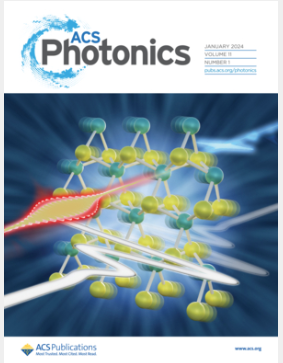High Efficiency All-Solution-Processed Inverted Quantum-Dot Light-Emitting Diodes
IF 6.5
1区 物理与天体物理
Q1 MATERIALS SCIENCE, MULTIDISCIPLINARY
引用次数: 0
Abstract
Inverted quantum dot (QD) light-emitting diodes (QLEDs) offer a cost-effective solution for active matrix-driven displays. However, solvent erosion compromises the structural integrity of the QD emission layer (EML) and introduces interfacial defects, leading to significant degradation in the light emission and charge-injection efficiency of fully solution-processed inverted QLED devices. In this study, this issue was addressed by introducing a polyethylenimine (PEIE) layer between the hole transport layer (HTL) and the EML. The PEIE layer effectively prevents solvent-induced damage to the underlying QD layer and reduces leakage current by decreased interfacial defects, thereby enhancing effective charge-injection and improving device efficiency. Furthermore, the combination of poly [bis(4-phenyl)(4-butylphenyl)amine] (Poly-TPD) and phosphomolybdic acid hydrate (PMAH) as transport layers substantially enhances the brightness and efficiency of the device. As a result, the optimized inverted QLEDs achieved a record external quantum efficiency (EQE) of approximately 23.2%, a current efficiency (CE) of 41.2 cd A–1, and well-controlled efficiency roll-off. The study systematically explored the impact of different interlayer materials and their positions on device performance, highlighting the importance of interface engineering in optimizing charge-injection and transport.

高效全溶液处理倒置量子点发光二极管
倒量子点(QD)发光二极管(qled)为有源矩阵驱动显示器提供了一种经济有效的解决方案。然而,溶剂侵蚀损害了QD发射层(EML)的结构完整性,并引入了界面缺陷,导致全溶液处理的倒置QLED器件的发光和电荷注入效率显著下降。在这项研究中,通过在空穴传输层(html)和EML之间引入聚乙烯亚胺(PEIE)层来解决这个问题。PEIE层有效地防止了溶剂对底层量子点层的损伤,并通过减少界面缺陷来减少泄漏电流,从而增强了有效电荷注入,提高了器件效率。此外,聚双(4-苯基)(4-丁基苯基)胺(poly - tpd)和磷酸钼酸水合物(PMAH)作为传输层的组合大大提高了器件的亮度和效率。结果,优化后的反向qled实现了创纪录的约23.2%的外部量子效率(EQE), 41.2 cd a - 1的电流效率(CE),以及良好控制的效率滚降。本研究系统探讨了不同层间材料及其位置对器件性能的影响,强调了界面工程在优化电荷注入和输运中的重要性。
本文章由计算机程序翻译,如有差异,请以英文原文为准。
求助全文
约1分钟内获得全文
求助全文
来源期刊

ACS Photonics
NANOSCIENCE & NANOTECHNOLOGY-MATERIALS SCIENCE, MULTIDISCIPLINARY
CiteScore
11.90
自引率
5.70%
发文量
438
审稿时长
2.3 months
期刊介绍:
Published as soon as accepted and summarized in monthly issues, ACS Photonics will publish Research Articles, Letters, Perspectives, and Reviews, to encompass the full scope of published research in this field.
 求助内容:
求助内容: 应助结果提醒方式:
应助结果提醒方式:


